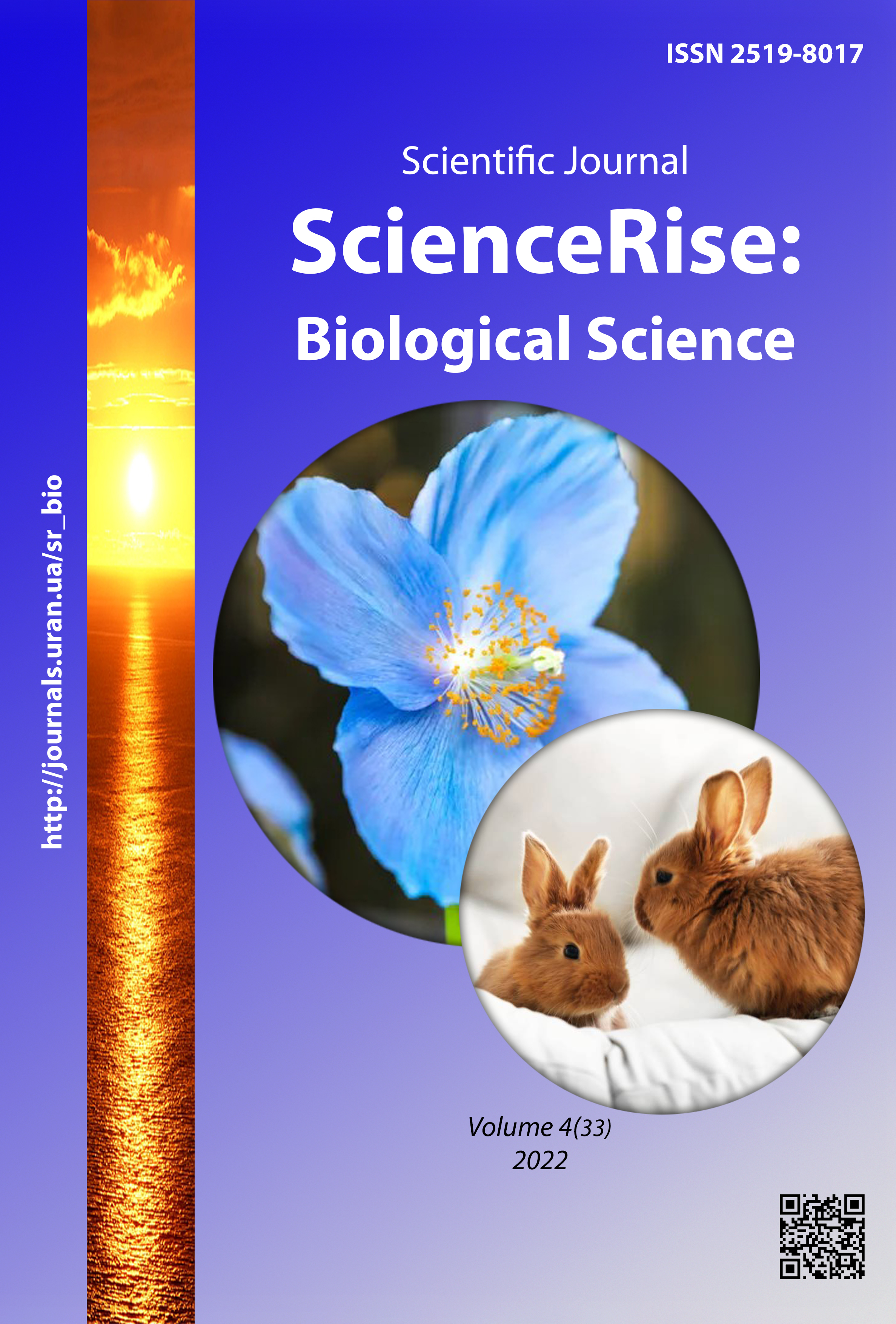The pathogenetic role of glycoproteins and proteoglycans in dog glomerulonephritis
DOI:
https://doi.org/10.15587/2519-8025.2022.266237Keywords:
dogs, pathogenesis, glomerulonephritis, glycosaminoglycans, glycoproteins, oxyproline, uronic acidsAbstract
The aim: to determine the main pathogenetic links of glomerulonephritis in dogs with the participation of connective tissue biopolymers.
Materials and methods The research was conducted by analyzing the sources of scientific literature (PubMed, Elsevier, electronic resources of the V. I. Vernadskyi National Library) and the clinical experience of the authors, thanks to which a scheme of the pathogenesis of glomerulonephritis in dogs with the participation of connective tissue biopolymers was developed.
Results. According to the results of our research, it was established, that chronic glomerulonephritis in dogs is accompanied by neutrophilia, lymphocytosis, as well as urinary and nephrotic syndromes, the progression of which causes a violation of the functional state of the kidneys and liver. Sick dogs develop a nephrotic symptom complex – persistent proteinuria, hypoalbuminemia, dysproteinemia, and hyperlipidemia. Clinically, edema was not observed, because it is known, that in dogs they are rarely detected with nephrotic syndrome. Inflammation in the kidneys is accompanied by an increase in the concentration of glycoproteins and sialic acids in the blood serum. After treatment, there was a decrease in the inflammatory process in the kidneys, which was manifested by a decrease in neutrophilia and lymphocytosis, as well as the content of glycoproteins and sialic acids in the blood serum. The content of total chondroitin sulfates and the fractional composition of glycosaminoglycans did not change, and the level of excretion of oxyproline and uronic acids decreased compared to the indicators before the start of treatment. This, in our opinion, is due to the slowing down of fibrotic processes in the kidneys. Thus, biochemical indicators of the state of connective tissue in the blood serum and urine of dogs with glomerulonephritis allowed us to evaluate the functional state of the kidneys for their inflammation (oxyproline and uronic acids), as well as to determine the violation of proteoglycan synthesis in nephrotic syndrome.
Conclusions. For glomerulonephritis in dogs on the background of depression, decreased appetite, polydipsia, pain during palpation in the lumbar region, periodic vomiting, neutrophilic leukocytosis, lymphocytosis, nephrotic syndrome (hypoalbuminemia, increase in α2- and β-globulins, cholesterol, β-lipoproteins), growth activity of ALT, AST, and alkaline phosphatase, a decrease in Veltman's test, hyperazotemia, hyperphosphatemia, proteinuria, microhematuria, and cylindruria, there is an increase in the content of glycoproteins, sialic acids, and chondroitin sulfates, as well as heparan sulfate in the blood serum of dogs. The increase in the blood serum of patients with canine glomerulonephritis, as a marker of connective tissue – glycoproteins, sialic acids, chondroitinsulfates, and urinary excretion of oxyproline and uronic acids is due to inflammatory and fibrotic changes in the basal membranes of the kidney glomeruli
References
- Codreanu, M. D., Popa, A. M. (2017). General and particular aspects in glomerulopathies in dogs and cats. Revista Romana de Medicina Veterinara, 27 (1), 43–49.
- Chew, C., Lennon, R. (2018). Basement Membrane Defects in Genetic Kidney Diseases. Frontiers in Pediatrics, 6. doi: https://doi.org/10.3389/fped.2018.00011
- Naylor, R. W., Morais, M. R. P. T., Lennon, R. (2020). Complexities of the glomerular basement membrane. Nature Reviews Nephrology, 17 (2), 112–127. doi: https://doi.org/10.1038/s41581-020-0329-y
- Aoki, S., Saito-Hakoda, A., Yoshikawa, T., Shimizu, K., Kisu, K., Suzuki, S. et. al. (2017). The reduction of heparan sulphate in the glomerular basement membrane does not augment urinary albumin excretion. Nephrology Dialysis Transplantation, 33 (1), 26–33. doi: https://doi.org/10.1093/ndt/gfx218
- Galvis-Ramírez, M. F., Quintana-Castillo, J. C., Bueno-Sanchez, J. C. (2018). Novel Insights Into the Role of Glycans in the Pathophysiology of Glomerular Endotheliosis in Preeclampsia. Frontiers in Physiology, 9. doi: https://doi.org/10.3389/fphys.2018.01470
- van der Vlag, J., Buijsers, B. (2020). Heparanase in Kidney Disease. Heparanase, 1221, 647–667. doi: https://doi.org/10.1007/978-3-030-34521-1_26
- Asai, A., Hatayama, N., Kamiya, K., Yamauchi, M., Kinashi, H., Yamaguchi, M. et. al. (2021). Roles of glomerular endothelial hyaluronan in the development of proteinuria. Physiological Reports, 9 (17). doi: https://doi.org/10.14814/phy2.15019
- Talsma, D. T., Katta, K., Ettema, M. A. B., Kel, B., Kusche-Gullberg, M., Daha, M. R. et al. (2018). Endothelial heparan sulfate deficiency reduces inflammation and fibrosis in murine diabetic nephropathy. Laboratory Investigation, 98 (4), 427–438. doi: https://doi.org/10.1038/s41374-017-0015-2
- Zhai, S., Hu, L., Zhong, L., Tao, Y., Wang, Z. (2017). Low molecular weight heparin may benefit nephrotic remission in steroid-sensitive nephrotic syndrome via inhibiting elastase. Molecular Medicine Reports, 16 (6), 8613–8618. doi: https://doi.org/10.3892/mmr.2017.7697
- Morozenko, D. V. (2010). Diahnostyka khronichnoho hlomerulonefrytu v sobak. Visnyk Poltavskoi derzhavnoi ahrarnoi akademii, 2, 127–129.
- Borza, D.-B. (2017). Glomerular basement membrane heparan sulfate in health and disease: A regulator of local complement activation. Matrix Biology, 57–58, 299–310. doi: https://doi.org/10.1016/j.matbio.2016.09.002
Downloads
Published
How to Cite
Issue
Section
License
Copyright (c) 2023 Dmytro Morozenko, Yevheniia Vashchyk, Andriy Zakhariev, Dmytro Berezhnyi, Nataliia Seliukova, Kateryna Gliebova

This work is licensed under a Creative Commons Attribution 4.0 International License.
Our journal abides by the Creative Commons CC BY copyright rights and permissions for open access journals.
Authors, who are published in this journal, agree to the following conditions:
1. The authors reserve the right to authorship of the work and pass the first publication right of this work to the journal under the terms of a Creative Commons CC BY, which allows others to freely distribute the published research with the obligatory reference to the authors of the original work and the first publication of the work in this journal.
2. The authors have the right to conclude separate supplement agreements that relate to non-exclusive work distribution in the form in which it has been published by the journal (for example, to upload the work to the online storage of the journal or publish it as part of a monograph), provided that the reference to the first publication of the work in this journal is included.









